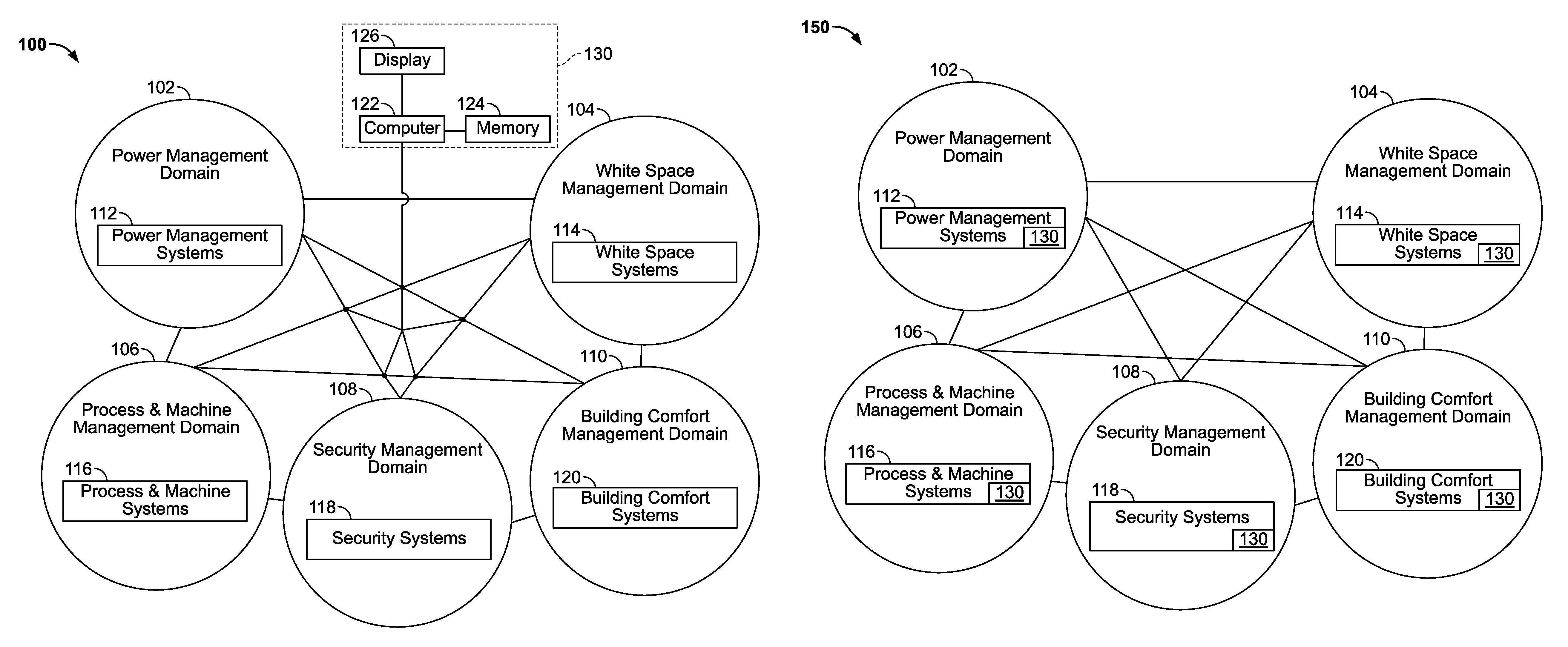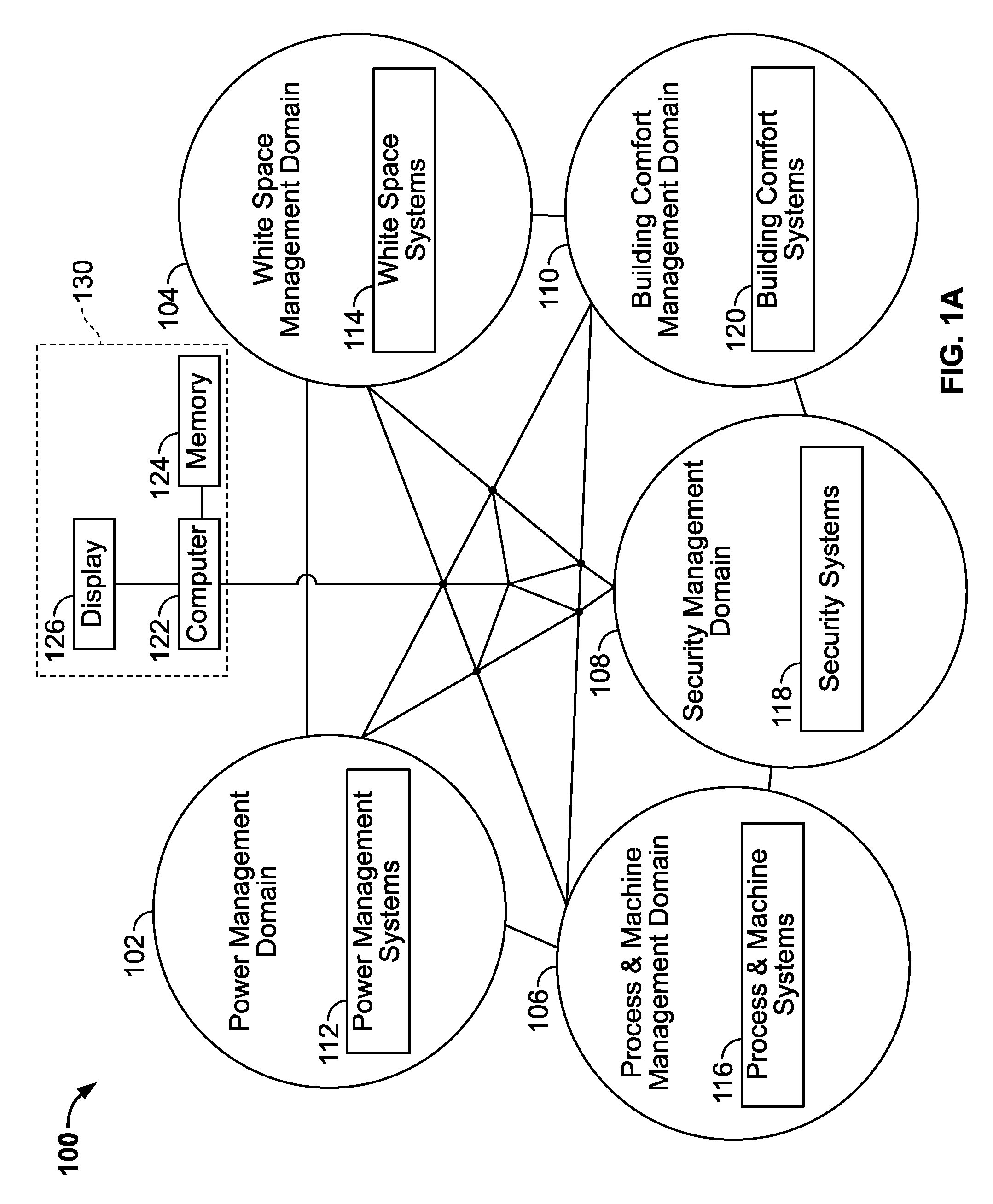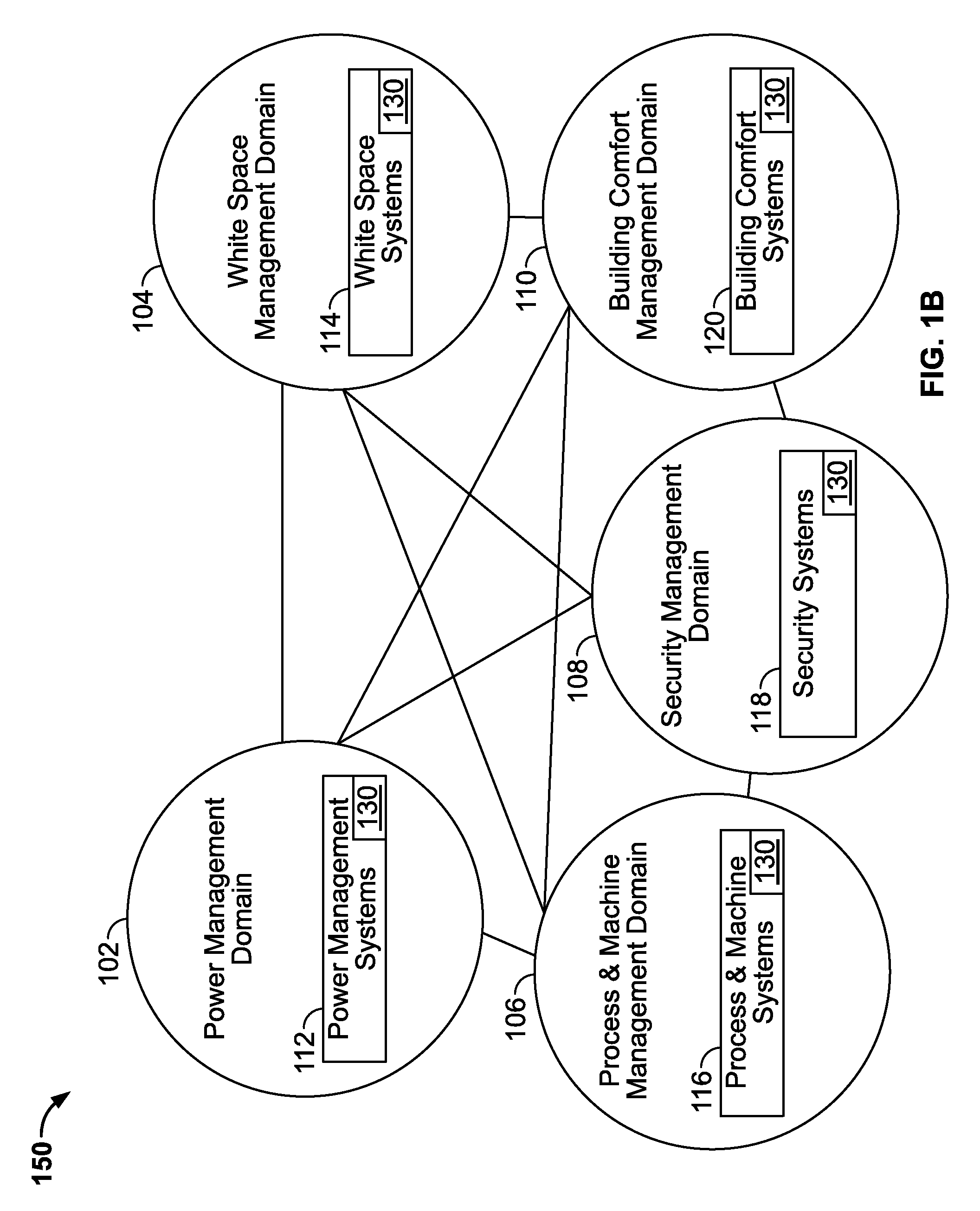Methods of integrating multiple management domains
a management domain and management technology, applied in the field of management domains, can solve the problems of inability to realize the value of information that could be gleaned from a cross-domain perspective, time-consuming and expensive deployment and management of custom-optimized systems, and require extensive and particularized operator training, so as to improve the control of facilities and equipment, reduce energy consumption, and improve the effect of user control
- Summary
- Abstract
- Description
- Claims
- Application Information
AI Technical Summary
Benefits of technology
Problems solved by technology
Method used
Image
Examples
Embodiment Construction
[0024]FIG. 1A is a functional block diagram of a data integration system 100 that integrates data indicative of multiple sensed conditions received from any two or more management domains 102-110. Five management domains are specified, including in no particular order a power management domain 102, a white space management domain 104, a process and machine management domain 106, a security (and safety) management domain 108, and a building comfort management domain 110. Each of the lines interconnecting each of the domains to one another indicate data flow and communication paths for the exchange of data, information, and commands between multiple domains. Each domain 102-110 includes one or more systems related to the respective domain. The power management domain 102 includes power management systems 112, the white space management domain 104 includes white space systems 114, the process and machine management domain 106 includes process and machine systems 116, the security manag...
PUM
 Login to View More
Login to View More Abstract
Description
Claims
Application Information
 Login to View More
Login to View More - R&D
- Intellectual Property
- Life Sciences
- Materials
- Tech Scout
- Unparalleled Data Quality
- Higher Quality Content
- 60% Fewer Hallucinations
Browse by: Latest US Patents, China's latest patents, Technical Efficacy Thesaurus, Application Domain, Technology Topic, Popular Technical Reports.
© 2025 PatSnap. All rights reserved.Legal|Privacy policy|Modern Slavery Act Transparency Statement|Sitemap|About US| Contact US: help@patsnap.com



